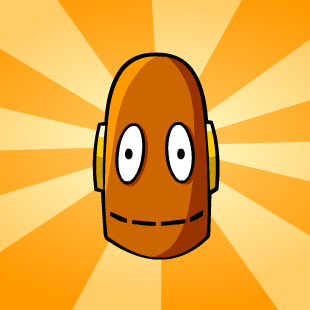
This page provides information to support educators and families in teaching K-3 students about Fast Land Changes. It is designed to complement the Fast Land Changes topic page on BrainPOP Jr.
This movie will explore earthquakes, volcanoes, wildfires, floods, hurricanes, and tsunamis. Some children have had experiences with these natural disasters and we recommend leading discussions and inviting them to share personal experiences. Arm children with facts that will help them understand the world around them, which will help allay anxieties and fears. Note that there are over a million earthquakes a year, most of which go undetected because they’re extremely small or take place in remote regions. Volcanoes provide rich soil for the surrounding land, and even wildfires can create healthy soil for reforesting.
Remind children that Earth is always changing, and some of these changes are slow and others are fast. We recommend watching the Slow Land Changes movie to review erosion and weathering before investigating this topic.
Children should know that the Earth is made of different layers—the core, mantle, and crust. You may want to watch the Earth movie for review. The crust is the outermost layer and the layer we live on. The crust is divided into different plates, or large areas. The continents and oceans rest on top of these tectonic plates. Help children understand that tectonic plates have been moving and pushing against each other very, very slowly for millions and millions of years. Sometimes the plates slip or move and cause an earthquake, but the vast majority of them cannot even be felt by humans.
What happens during an earthquake? Discuss with children. More than 90% of earthquakes are imperceptible, and wouldn’t even cause water to tremble in a glass. The rare serious earthquake, however, can cause the ground to break down and damage roads and buildings. Earthquakes also can sometimes cause landslides, which happen when large pieces of land break off and slide down. Help children understand that earthquakes can seem a little scary, but they are natural events that happen everyday. Most of them cannot be felt and many of them happen out in the ocean. If earthquakes occasionally happen in your community, you may want to take this opportunity to discuss ways to be safe during an earthquake and how to prepare for them.
A volcano is an opening in Earth’s crust that allows melted rock, ash, and gases to come up. Magma is molten, melted rock that comes up from the mantle and erupts through the crust. When magma reaches the surface and flows down, it’s called lava. Volcanoes spit up burning hot lava, ash, and gases. When lava cools down, it turns into hard rock. Cooled lava can form hills and change the way land looks, and it can even form islands, like Hawaii. In 1980, Mount Saint Helens in Washington erupted and caused a big landslide. It let out gas and ash that reached nearby states. It is important for children to understand that most volcanoes are not active, and some will never erupt. Volcanoes bring rich soil, which is good for growing crops. Many volcanoes are found where the tectonic plates meet. The Ring of Fire is an area in the Pacific Ocean that is the most seismic region of the Earth. It contains more than 450 volcanos, nearly 80% of the world’s total. Children should know that some volcanoes are even underwater: volcanic eruptions and earthquakes in the ocean can, on rare occasions, cause tsunamis, which are big waves in the sea. The wave can travel across the ocean and break on a coast, causing damaging floods.
Review with children that a flood happens when water flows into an area that’s usually dry. If there is too much rainfall, a stream or river can overflow its banks and flood the area around it. Floods can create erosion of land and also cause a lot of problems in communities, in damage to property, cars, buildings and crops. Some children may have experienced flooding or witnessed a flood. What happened? What did the land look like? How did the community work together to reduce damage?
A hurricane is a powerful tropical storm with very strong winds and a lot of rain. Hurricanes are also called “tropical cyclones”, due to the tunnel shape and circular motion of these storms. If they reach land, hurricanes can cause damage to land and property, and also lead to flooding. In the North Atlantic there are generally around five hurricanes per year, but many of them remain out to sea or diminish in power before reaching land. Hurricanes do serve a purpose: they maintain global heat balance, and move moist tropical air to dry regions. While hurricanes can cause great damage, as with Hurricane Katrina in 2005, it is crucial that children understand that people are always working to better prepare cities for fast land changes like hurricanes, earthquakes, and floods.
Wildfires are fires that can spread very quickly. Some wildfires are a natural part of the ecosystem, and caused by natural phenomenon such as lightening. Many other wildfires are caused by people. During wildfires, many plants and animals lose their homes, and their destructive forces can affect communities. Even though wildfires can seem destructive and scary, sometimes they are a natural part of our changing Earth. Help children understand that while wildfires can leave behind rich, fertile soil that allows plants to grow back, all people need to be extremely responsible with fire, so as not to damage their homes or the larger ecosystem.
Like all living things, earth is always changing. Invite children to think of other ways land changes around them. How do people or animals change land? How does weather change land? How do people adapt to the changes? Discuss and explore this topic together.






























